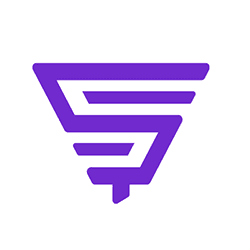Employee referrals have long been one of organizations' most effective recruitment strategies, offering a unique blend of speed, quality, and cost-efficiency. But what exactly is an employee referral, and how can organizations design a program that benefits both the business and its employees? In this guide, we’ll walk through the essentials of employee referral programs, their advantages, and how to set up a system that works.
What is an employee referral?
An employee referral is when a current employee recommends someone from their network for an open position within their company. Typically, employees refer people they know personally — such as friends, family, or former colleagues — who they believe would fit the organizational culture and job requirements well. In many organizations, referred candidates are fast-tracked through the hiring process, often benefiting from the existing employee’s internal knowledge of company expectations.
Key components of an employee referral program
At the heart of any successful employee referral program are key elements that distinguish it from other recruitment methods:
- Clear guidelines: Employees need to understand the organization’s requirements for candidates and the referral submission process.
- Incentives: Rewarding successful hires, whether monetary or otherwise, motivates employees to participate.
- Tracking system: A system that tracks referrals and rewards ensures transparency and efficiency.
Unlike traditional recruitment methods, which rely heavily on external advertising and talent sourcing, referral programs leverage employees’ networks to bring in pre-vetted candidates. This often results in faster, more cost-effective hires.
The benefits of employee referral programs
Employee referrals can transform recruitment for companies of all sizes. Not only do they offer distinct advantages, but they also align with business goals, particularly for companies focused on improving their employer brand and retaining talent.
Advantages for organizations
Referrals provide a powerful, cost-effective way to fill open positions. These programs can be particularly beneficial for small and medium-sized enterprises (SMEs) that may lack large recruitment budgets. Larger enterprises enhance hiring by providing a steady stream of qualified candidates.
Increased quality of hires
Referrals often lead to better-fit candidates. Since employees typically refer individuals they already know, the recommended candidates tend to be a stronger cultural fit and come with a clearer understanding of the role, leading to longer employee retention.
Cost-effectiveness
One of the most significant benefits of referral programs is their cost-efficiency. Compared to traditional recruitment methods — like job boards and digital advertising — referrals generally require less investment in sourcing and advertising.
Learn more about the advantages of referral programs here.
Faster hiring process
Referrals often accelerate the hiring process. With pre-vetted candidates entering the pipeline, recruiters can skip some of the initial sourcing steps, reducing time-to-hire. Additionally, because these candidates are often already aligned with company values, the interview process tends to move more quickly.
Creating an effective employee referral program
Designing a successful referral program involves several key steps that ensure it not only benefits the company but also engages employees. Here are the essential components of building a referral system that delivers results.
Developing a referral program policy
Every successful referral program starts with a well-crafted policy. This policy should clearly outline the types of roles eligible for referral, the criteria for submitting candidates, and the rewards for successful placements. Best practices include providing employees with a straightforward submission process and maintaining transparency regarding how referrals are tracked and rewarded.
Setting up a referral system
Implementing a referral system requires the right tools. Platforms designed for referrals, such as Symphony Talent's referral solutions, can streamline the submission and tracking process. These systems allow for easy submission, real-time tracking, and integration with existing HR platforms.
Learn more about referral solutions here.
Communicating the program to employees
Promoting your referral program internally is crucial. Employees need to be informed about the program, including clear guidelines and incentives. Communication strategies might include email campaigns, internal newsletters, and company-wide meetings. Highlighting success stories can also encourage participation.
For more tips on communicating your referral program, check out this blog.
Evaluating the success of your referral program
A referral program’s effectiveness depends on continuous evaluation and adjustments. By analyzing key metrics and gathering feedback, you can ensure the program stays relevant and delivers ongoing value to your organization.
Measuring program effectiveness
Tracking the success of your employee referral program is essential to its long-term viability. Key performance indicators (KPIs) to monitor include the number of referrals, the quality of hires, time-to-hire, and retention rates for referred candidates. Using tools, such as SFX Insights, that integrate with your existing HR system can simplify the process of gathering and analyzing this data.
Making adjustments based on feedback
No program is perfect from the start. Collecting feedback from employees, recruiters, and even referred candidates can help you identify areas for improvement. Use this feedback to fine-tune your referral system and ensure it continues to meet the needs of your organization.
To dive deeper into evaluating and optimizing referral programs, explore this resource.
Ready to build your employee referral program?
Employee referral programs are a proven, effective way to improve the quality of your hires, reduce recruitment costs, and speed up the hiring process. By focusing on clear policies, proper communication, and continuous evaluation, you can create a referral program that works for your organization.
Discover more about crafting the perfect referral program with Symphony Talent’s solutions.



